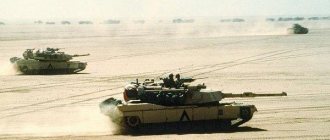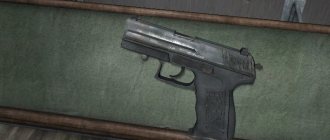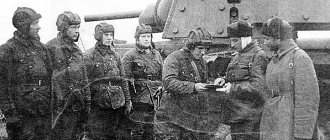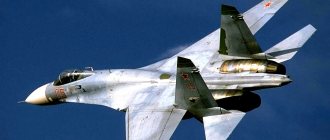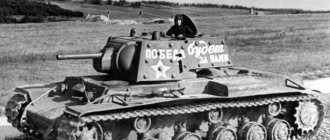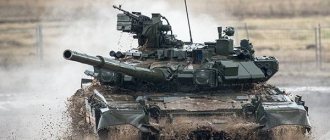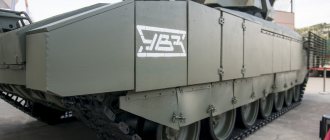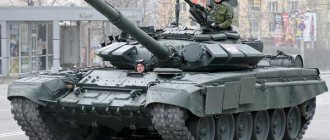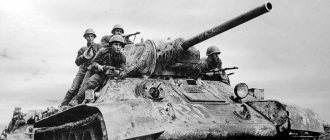T-10 (IS-8) is a heavy Soviet Tier IX tank with good mobility and a gun. On the way to Object 277 you will need to master this unit perfectly. Considering the regular additions to the branches, a lot of skill will be required to fully implement this tank. After all, if previous vehicles offered relatively good armor and allowed tanking, in this case the player will have to thoroughly study the features of the “pike nose”, gun, as well as all the possibilities in terms of maneuvers during the battle.
Modules:
Turrets/guns
| Lv. | Tower | Armor (mm) | Rotation (deg/sec) | Review (m) | Weight, kg) | Price (credits) |
| VIII | T-10 | 201/129/90 | 26 | 380 | 11 000 | 33 680 |
Compatible weapons:
| Lv. | gun | Penetration (mm) | Damage (HP) | Rapid fire (rounds/min) | Spread (m/100m) | Mixing (c) | BC | Weight, kg) | Price (credits) |
| VIII | 122 mm D-25T | 175/217/61 | 390/390/530 | 5.08 | 0.46 | 3.4 | 30 | 2 590 | 125 140 |
| IX | 122 mm BL-9 | 225/265/68 | 390/390/530 | 4.72 | 0.4 | 3.4 | 30 | 2 790 | 178 500 |
| X | 122 mm M62-T2 | 258/340/68 | 440/440/530 | 4.72 | 0.38 | 3.2 | 30 | 3 397 | 335 000 |
| Lv. | Tower | Armor (mm) | Rotation (deg/sec) | Review (m) | Weight, kg) | Price (credits) |
| IX | T-10M | 250/201/90 | 26 | 400 | 11 000 | 66 500 |
Compatible weapons:
| Lv. | gun | Penetration (mm) | Damage (HP) | Rapid fire (rounds/min) | Spread (m/100m) | Mixing (c) | BC | Weight, kg) | Price (credits) |
| VIII | 122 mm D-25T | 175/217/61 | 390/390/530 | 5.31 | 0.46 | 2.9 | 30 | 2 590 | 125 140 |
| IX | 122 mm BL-9 | 225/265/68 | 390/390/530 | 4.88 | 0.4 | 2.9 | 30 | 2 790 | 178 500 |
| X | 122 mm M62-T2 | 258/340/68 | 440/440/530 | 4.88 | 0.38 | 2.8 | 30 | 3 397 | 335 000 |
Engines
| Lv. | Engine | Power (hp) | Fire probability (%) | Weight, kg) | Price (credits) |
| IX | V-12-5 | 700 | 15 | 1 024 | 84 000 |
| IX | V-12-6 | 750 | 15 | 1024 | 84 200 |
Chassis
| Lv. | Chassis | Max. load (t) | Turning speed (gr/sec) | Rmin | Weight, kg) | Price (credits) |
| VIII | T-10 | 50.91 | 30 | B/2 | 10 000 | 27 920 |
| IX | T-10M | 58.9 | 32 | B/2 | 10 000 | 66 500 |
Radio stations
| Lv. | Radio station | Communication range (m) | Weight, kg) | Price (credits) |
| VII | 10RK | 440 | 100 | 18 600 |
| IX | 12RT | 625 | 110 | 33 600 |
| X | R-113 | 730 | 80 | 52 200 |
T-90 VS ABRAMS: COMPARISON OF DESIGN AND PROTECTION
First of all, you need to take into account that the T-90 tank, developed by UKBTM more than 20 years ago and essentially being a deep modernization of the T-72, itself has many modifications: T-90 (1992 model), T-90 “Bhishma”, T-90SA , T-90A (2004 model), T-90AM, T-90SM, which differ significantly from each other both structurally and in combat effectiveness.
The same applies to the American Abrams, which entered service in 1980. There were its modifications: M1 (with a 105-mm cannon), M1A1, M1A1NE (with “heavy armor”), M1A2, M1A2 SEP (System Enhancement Program), M1A1/A2 TUSK (Tank Urban Survival Kit). Moreover, for example, the innovations introduced on the modification of the M1A2 tank increased its combat effectiveness compared to the M1A1 modification in the offensive by 54%, and in defense by 100%.
M1A2 Abrams SEP TUSKII |
For this reason, meticulously comparing millimeters and kilograms makes at least some sense only for very specific modifications released in the same period of time. Therefore, we immediately “out of brackets” the frankly weaker M1 with a 105-mm cannon and so far existing only in prototypes of the T-90AM/SM.
First of all, it should be noted that the USA and the USSR, and subsequently Russia, chose two different approaches to the design of their tanks. The naked eye can see that the T-90 is significantly smaller than the M1. This was achieved thanks to the T-90’s abandonment of the loader, which requires about 1.7 m of fighting compartment height to operate. As a result, restrictions on reducing the height of the tank were lifted, and the use of a dense layout made it possible to create a highly protected vehicle with a low silhouette and a small longitudinal and cross-sectional area with a relatively low weight. As a result, the reserved volume of the T-90 is only 12 cubic meters, and the Abrams - 21. True, you have to pay for everything - and the downside of the dense layout was the cramped conditions of the crew members, as well as the difficulty of replacing crew members with each other if necessary.
Many will say that since the Abrams is heavier, it means it is better protected. But not everything is so simple. Reducing the internal reserved volume on the T-90 called for reducing the weight of the armor to ensure the required level of protection. Due to its smaller dimensions, the frontal projection, the most likely to be damaged, is only 5 sq.m for the T-90, and 6 sq.m for the Abrams. This alone makes the T-90 potentially less vulnerable.
Unfortunately, it is not possible to compare the actual security of the T-90 and the Abrams due to the high level of secrecy on this issue. However, it is known that the armor of the front part of the turrets is made according to a similar principle - packages of “reflective sheets” are installed in the pockets of the frontal armor. They provide increased anti-cumulative resistance, while resistance against kinetic ammunition deteriorates due to a decrease in the density of the barrier (air gaps between packages).
The T-90's "reflective sheets" are made of steel, while the Abrams's, starting with the M1A1NA modification, were made of depleted uranium. Due to the high density of uranium (19.03 g/cm3), these plates, with an extremely small thickness, ensured the “explosive” nature of the destruction of the cumulative jet.
In addition to the usual armor, the T-90 also uses a complex of built-in dynamic protection, which most modifications of the Abrams do not have, with the exception of the M1 TUSK (Tank Urban Survival Kit) with increased security, designed for operations in urban environments.
The Kontakt-5 dynamic protection installed on the T-90 works both against cumulative weapons and against armor-piercing finned sabot projectiles. The complex provides a powerful lateral impulse, allowing to destabilize or destroy the BPOS core before it begins to interact with the main armor.
Now, according to the manufacturer, the frontal armor of T-90A tanks can withstand hits from the most popular Western BOPS-M829A1, MS29A2, DM-33, DM-43. In 1995, as part of a special display in Kubinka, the T-90 was fired at by 6 shells from another tank from a distance of 150-200 m. They fired with modern Russian cumulative shells. The frontal armor was not penetrated; moreover, after the shelling, the vehicle was able to return to the observation deck under its own power.
On the other hand, according to statements by American officials, the frontal armor of the M1A1 also withstood fire from the 125-mm guns of Iraqi T-72 tanks, although they fired outdated ZBM9 and ZBM12 BOPS, which were withdrawn from service in the USSR back in 1973.
Order of studying modules:
| Chassis | Tower | gun | gun | Engine | Radio station | Radio station | |
| Result: Experience: 196050 Credits: 816050 | |||||||
| T-10M | T-10M | 122 mm BL-9 | 122 mm M62-T2 | V-12-6 | 12RT | R-113 | |
| 23800 experience - 66500 credits | 28300 experience - 66500 credits | 44,000 experience - 178,500 credits | 59300 experience - 335000 credits | 26350 experience - 84200 credits | 5600 experience - 33600 credits | 8700 experience - 52200 credits |
More details on the research.
- The T-10M chassis will add carrying capacity and also increase the maneuverability of the tank.
- T-10M turret - increases armor and viewing range.
- 122 mm BL-9 gun - provides access to the top gun.
- The 122 mm M62-T2 gun has high single-shot damage and excellent penetration.
- The V-12-6 engine significantly increases dynamics.
- Radio stations 12RT and R-113 - increase communication range.
ZSU T-34-20.
This alteration was also carried out by Ernest Albert for his unit. On this vehicle, instead of a standard turret, a platform with three 20 mm automatic cannons was mounted. The car was also captured in the southwest of Frankfurt an der Oder.
ZSU T-34-20
ZSU T-34-20
ZSU T-34-20
ZSU T-34-20
Crew:
- Crew commander (radio operator);
- Gunner;
- Driver mechanic;
- Charging.
Learning additional skills for the crew:
Standard crew:
| 1 | 2 | 3 | 4 |
For the first slot, we teach all crew members, except the commander, the “ Repair” , and for the commander the “ Sixth Sense” skill - the “Repair” skill speeds up the repair of damaged modules, and the “Sixth Sense” will allow you to determine whether his tank has been detected by the enemy. Also, all crew members need to learn the additional skill “ Combat Brotherhood” , which will improve the level of proficiency in the specialty - be sure to learn it all at once, preferably used in the second or third slot.
- the Eagle Eye skill , which increases the viewing range.
- For the gunner we learn the skill “ Smooth turret rotation” , which reduces the spread when turning the turret; and the Sniper , which increases the chances of causing damage to modules and crew members.
- For the driver mechanic, we learn the “ Smooth Move” , which reduces the dispersion of the gun in motion; and the Off-Road King , which reduces drag on soft to medium ground when driving.
- For the infector, we learn the skill “Non-contact ammo rack ,” which increases the strength of the ammo rack; skill “Desperate” , which reduces the reload time when less than 10% strength remains.
"Tigers" and the rush
The topic of German heavy tanks has long been overgrown with all sorts of myths. We will not seriously consider the opinion that the Germans began work on heavy tanks only after the attack on the USSR - it contradicts the facts too much. But when you consider that the Germans have been designing heavy tanks since 1937, a new question immediately arises: what have they been doing all these years? The answer to this is often that heavy tanks did not fit into the concept of blitzkrieg, so work on them was carried out with low priority, but as the Germans got stuck near Moscow and switched to defensive battles, they created the heavy and clumsy Tigers. This question can be formulated differently: what was the Soviet influence on the creation of German heavy tanks? And was it?
First of all, we note that the Germans did not deliberately slow down the heavy tank program. The first heavy tank DW was developed in parallel with the new ZW chassis for the Pz.Kpfw.III: design work was carried out in 1937, and prototypes were tested in 1938. Work on new light tanks was progressing at a similar pace. Another question is that the DW design turned out to be very crude and unsuccessful, and the necessary alterations disrupted the start of mass production. When VK 30.01 (H) was more or less brought to fruition, it was already hopelessly outdated. All the explanations about low priority and blitzkrieg are reminiscent of the fable about the fox and the grapes: if it didn’t work out, then it wasn’t really necessary. However, we have already touched on this story.
This is roughly what the VK 30.01 (P) looked like in May 1941. The last step remained before the "Tiger"
Now let’s look at how much the Germans changed their approach to heavy tanks after the attack on the USSR, and whether they changed it at all. As is known, the Tiger H1 appeared during the conversion of the VK 36.01 heavy tank chassis into a turret with an 88 mm gun, which was originally created for the VK 30.01 (P) heavy tank. In the period from February to May 1941, Porsche actively discussed the armament of the future tank. Long-barreled 88 mm and 105 mm guns were considered, but in the end they settled on an 88 mm gun with a barrel length of 56 calibers. Thus, the concept of a heavy tank with an 88-mm gun took shape in the spring of 1941, even before the attack on the USSR. At the same time, it was decided to increase the thickness of the frontal armor to 100 mm.
Conversion of VK 36.01 and VK 30.01 (P) into Tiger H1 and Tiger P began in July 1941. In just a year, the Germans wanted to complete the drawings and launch mass production. On May 28, I received an order for VK 45.01 (H), and by July 28, a drawing of a new cooling system in isolated compartments was ready - which means that the body was redesigned even then. Meanwhile, the design of new 15-liter engines for the Tiger P was in full swing. The documents were stamped with a reminder that work on the Geraet 4501 P program (“Product 4501 P”) was being carried out strictly according to deadlines. Conclusion: work on the “Tigers” was actively carried out even before the Germans got stuck near Moscow, and the T-34 and KV-1 did not have any decisive influence on the characteristics of heavy German tanks.
Drawing of the new cooling system for the Tiger H1 tank dated July 28, 1941
As for the "Royal Tigers", their presentation as a response to the appearance of the IS-2 is simply absurd. The Germans first thought about installing an 88-mm gun with a 71-caliber barrel length on a tank back in September 1941. Only with the practical implementation of this requirement of Hitler did the serious influence of the Soviet school on German heavy tanks begin, since when developing the VK 45.02 (P) for the 88-mm L/71 gun, the hull and turret were designed with an eye on the T-34. The VK 45.03, aka the “Royal Tiger,” appeared so late not because the Germans rushed to create an answer to the new Soviet tanks, but because of another attempt at unification, this time with the Panther II. As they say, this has never happened - and here it is again.
Equipment, gear and ammunition:
List of equipment that can be installed on the T-10:
Equipment for the T-10 tank:
For the " Universal" , you need to install the "Rammer", "Vertical Stabilizer" and "Improved Ventilation" . On the first slot we install complex Rammer equipment, which increases the reload speed by 10% . On the second slot we install complex equipment Vertical Stabilizer, which reduces the dispersion of the gun when moving and turning the turret by 20% . In the last slot we install complex equipment Improved ventilation, which increases the level of proficiency in the main specialty and additional skills by 5% .
For the Defense-Sniper the Rammer, Reinforced Aiming Drives, and Improved Ventilation equipment . On the first slot we install complex Rammer equipment, which increases the reload speed by 10% . On the second slot we install complex equipment: Reinforced aiming drives, which increases the gun aiming speed by 10% . In the last slot we install complex equipment Improved ventilation, which increases the level of proficiency in the main specialty and additional skills by 5% .
Equipment:
List of equipment that can be installed on the T-10:
The equipment should be equipped with a standard set of equipment: Small repair kit , Small first aid kit , Hand fire extinguisher . The fire extinguisher can be replaced with Lend-Lease oil , which will increase engine power by 5% . For tournaments or when there are a lot of credits, you can replace the fire extinguisher with Extra Ration 10% to all skills .
Ammunition:
122 mm M62-T2 gun - we’ll take most of the armor-piercing shells, but against more armored opponents it’s worth taking a few premium cumulative shells, which will make the game easier. High-explosive fragmentation shells will be useful for us to shoot down the capture of the base and finish off opponents with a small margin of safety. The total ammunition load is 30
shells.
Assembly of equipment, consumables and ammunition - Universal:
| 18 | 10 | 2 | ||||||
Assembly of equipment, equipment and ammunition - Defense-Sniper:
| 18 | 10 | 2 | ||||||
World of Tanks: Strv S1 guide
Guide to Sweden's premium Tier VIII tank destroyer Strv S1. History of creation, analysis of performance characteristics and tacticsb, pros, cons and farm indicators
Hello, tankers!
The first significant gameplay innovation in World of Tanks was the introduction of vehicles with an automatic loader. Then the new “drummers” blew up the rand.
Since then, there have been no such innovations for a very long time, but recently we received Swedish equipment with unique gameplay - siege mode.
Important
And if you are still wondering whether the game is worth the candle, whether you will like the new mode, then this material is for you, meet the Swedish premium tank destroyer with siege mode Strv S1 !
In the early 1950s of the last century, the Swedes were in a state of “tank starvation.” Their promising developments looked pale compared to those in the USSR and allied countries. Even the Centurions purchased from Great Britain did not solve the problem, but were only a temporary measure.
And then, in 1956, the brilliant Swedish designer Sven Berge initiated the development of a unique tank without a turret with an adjustable suspension. To test the new suspension, the practical and economical Swedes converted the prototype of the Krv (Kranvagn) tank and the Ikv-103 self-propelled gun.
Later, as a result of a number of modifications, the designed vehicle, which initially did not arouse interest, became the main contender for a production tank. Various improvements were made, as a result of which the gun and engine were selected, and the dimensions and weight of the tank were specified.
Also, the mechanical suspension was replaced with a more advanced hydropneumatic one.
The vehicle was improved over the course of seven long years, but it acquired its final form and name Strv 103A only in 1967, when the first batch of new tanks was produced and put into service.
In our game there are three iterations of this vehicle: Strv S1 (1962 prototype), which we are considering, Strv 103-0 (1966 prototype) and Strv 103B, Sweden's top tank destroyer, 1970 variant, produced since 1967 and was in service with Sweden until 1992.
Known drawings of Strv S1
Analysis of tank performance characteristics
A detailed list of performance characteristics is below. Let's talk in more detail about some aspects of the car.
Full list of tank performance characteristics
Armor protection. There is no armor as such. Not entirely categorically, but still. The forehead of the vehicle has a wedge-shaped shape and a thickness of 20 mm to 35 mm, which in some cases will save you, according to the rule of three calibers, from tanks with guns up to 90 mm, i.e.
from almost all VII levels and from most ST-8s. This is facilitated by the tilt of the armor plates up to 70°. Don't expect more. There are small screens on the sides above the tracks that will absorb some of the damage from landmines and sometimes cumulative damage.
Their structure is such that they have a common plane on top with the main armor, so they sometimes save them from penetrations. The sides and stern are also 30 mm thick, but miracles don’t happen here - in 99% of cases you are penetrated. An artillery shell from above will almost always one-shot you, because...
Most artillery landmines have a penetration of more than 30 mm.
The number of hit points for our PT is average for the level, 1000 units. This is approximately two to three TT shots or four to five ST shots. I already wrote about art.
Firepower. What really surprises our PT is its cannon. An excellent 10.5 cm kan strv 103 L/51 with a penetration of 288 mm with a basic AP projectile is no joke! A similar weapon is installed in the pumpable analogue of our vehicle - UDES 03.
Advice
Based on all the indicators, this gun will easily outshine any premium equipment at the level; this is a new word in the WoT arms race. As you understand, the one-time damage is 390, but we can only shoot from siege mode, because the gun is rigidly mounted in the body and has no aiming angles.
In siege mode, the accuracy and all indicators of the gun reach their maximum values, and aiming angles are achieved by raising/lowering the hull.
As I said, the main shells are BP shells with a penetration of 288 mm and premium BP shells with a penetration of 330 mm.
They can safely pierce Maus into the cheeks of the tower! You will only use them against strong TT-10s, and then only once every few battles. All types of projectiles have a good flight speed, because... this is BP.
Land mines are present, where without them. Their performance: 53 mm and 480 damage per shot. A couple of pieces won't hurt.
The accuracy of the gun in traveling mode is 0.4 m at 100 m, but don’t let this figure scare you, because we don’t shoot from traveling mode. In siege mode, from a dull 0.4, the accuracy increases to 0.27-0.29 m per 100 m on all “buns”. No one can say more precisely, but why do you need to be even more precise when our anti-tank weapon hits the squirrel in the eye at extreme distances.
The aiming time in marching mode will be 3 s, in siege mode - 1.4 s. Excellent result! But remember that in siege mode your speed is limited to 8 km/h. In stock, the gun is loaded in 10.2 s, with the crew and equipment loaded - in 8.24 s, which is an excellent result for such a gun.
The UVN and UGN are absent in the marching mode, and in the siege mode the UVN is -11° down and 11° up.
Dynamics. The dynamics of the car are not bad, but no more. If you have already ridden Sweden's top-end PTs, then I will tell you that they go faster, which is logical, because, in fact, this is their prototype.
note
Although the “maximum speed” is 50 km/h, in reality we only reach it from the mountain, and usually we drive only 40-45 km/h. The vehicle weight is 34 tons, and the Motoraggregat 1S engine power is 540 hp, which gives 16.36 hp/t.
We rotate in place at a speed of 26°/s.
Great news: due to design features, the reverse speed of our PT is 45 km/h , and it is gaining them! It is very convenient to use this, for example, when running away from a position when there is light, or even to shock some T28 or T95 by overtaking it backwards.
Detection. Review is clearly not the strong point of our tank destroyer. It is a measly 350 m. Even at “full ground” the review figures will be only about 400-405 m, which is not much.
But we don’t need to shine, we just need to use the light from our allies, this is our main task. It makes sense to put “horns” on the PT in order to somehow increase the visibility, but more on that below.
By the way, they do not “fly off” from rotation in siege mode.
Speaking about camouflage, I would like to say that according to the passport it is phenomenal. In fact, this is true, but it’s better not to rely on it - we often glow after a shot.
It’s worth giving credit to our PT - in the “Storm” battle mode on the Sandy River, I stood on the central dune in the middle of the map and dealt left and right. No one saw me until they arrived close by. Agree, it's nice.
It makes sense to enhance the cool camouflage with a “mesh”, because in terms of shooting we are already doing well. In general, the Strv S1 disguise can be given 11 glowing “borscht” out of 10.
Farm quality. The farming qualities of the PT are average in level, although still lower than other equipment. There is no secret, because credits are also given for exposure, and we most often work on someone else’s exposure.
In this case, half of our credits goes to the one who discovered the enemy. But I can say with confidence that for 2-3 thousand damage you will take out of the battle about 50-70 thousand clean with an active PA, but without it the numbers will be worse - 35-55 thousand silver.
As a simulator for learning how to play the top PT in Sweden, farming is a nice bonus.
Selection of equipment, consumables and crew perks
Leveling up the crew If you participated in the New Year's activities and received Swedish tankers, and also made the right choice in favor of the PT branch, then there will be no problems here. If you are upgrading your crew from scratch, then here is a set for you:
- Commander: “Light Bulb”, “Disguise”, “Combat Brotherhood”, “Repair”
- Drive: “Disguise”, “Repair”, “Combat Brotherhood”, “Smooth Move”
- Radio operator: “Disguise”, “Repair”, “Combat Brotherhood”, “Radio Interception”
Selection of equipment. As I wrote above, everything is fine with shooting here, so we’ll try to strengthen the camouflage and level out the poor visibility:
Stealth Sniper play style: Rammer, Stereo Tube, Camouflage Net. This set turns us into the classic PT that we are. Quick bursts and tanking are not for us, but covering someone else’s light is always welcome! Thus, we have improved the rate of fire, camouflage and visibility. Now you can go into battle!
Choice of shells. Our AT tank holds 50 shells, which can be distributed as follows:
Shell setup for playing in random (BP/BP/OF):
- "Stealth Sniper 1" — 40/8/2
- "Stealth Sniper 2" — 38/10/2
- "Stealth Sniper 3" — 35/13/2
Selection of equipment. The equipment is the same as for any other tank - a repair kit , a first aid kit and a fire extinguisher . If you want to further improve all the machine’s performance, you can put “Coffee and pastries”, but we earn silver from premiums, and not vice versa.
Our car information window
Tactics and tips for using a tank
This PT, by introducing it into the game, solves several problems at once, and the developers know this.
The self-propelled gun gives everyone a chance to try the new “siege mode”, if you are still thinking about the advisability of upgrading Swedish self-propelled guns.
She farms well, like a premium tank, and if you have already tried the Scandinavian top PTs and liked them, then here is a farming game with their properties! Everywhere you look there are only advantages, she even trains the crew!
Important
Let's take a closer look to see if everything is so rosy and how to play it. In fact, this tank is not suitable for everyone. After all, there is a category of players who don’t feed them bread - let them get into some kind of “bummer”. So, this PT is not for them.
It is for patient and calculating, cold-blooded loners who know all positions on all maps and are able to wait for their target, like a hunter, hiding out of line of sight. This machine will give maximum pleasure to such players.
Sometimes you just want to take a break from bursting or driving around the center of the map, Strv will also work here. Well, in principle, she is listed as another good premium.
“How to play on such machines?” the tanker will ask, and I will answer - it’s a matter of habit. After just two or three battles on such a tank, you will completely adapt to the presence of firing modes, and this will not bother you at all. During the first couple of battles, you will have to get used to the fact that before firing, you need to press “X” and after shooting too, but this won’t last long.
Now more details. Armor is a random thing, luck is just 50/50, and you simply have no chance against calibers above 90 mm. The whole point of booking these anti-tank guns lies in the rules of two and three calibers.
In short, if the caliber of the gun is more than three times the thickness of the armor, ricochet will not occur. The rule of two calibers states: if the armor at the point of impact is half the caliber of the gun, then the normalization indicators increase, i.e.
It becomes easier for such a projectile to penetrate you.
In short, try not to get caught by the enemy, and especially not by artillery. Firing modes give you some advantage, which I'll try to talk about now. It is very beneficial to use our PT on the crests of hills, the reverse slopes of mountains, and generally anywhere where there is at least some relief.
Your main defender will be the terrain, and not your armor. You roll up to the edge of the rise, turn on the “siege mode” and in this form go towards the enemy. He sees only the ground and behind it - the flat cover of your PT. But again, remember, it’s better to go at an enemy who is obviously discharged.
You should try to get him to shoot only when you are confident in your abilities, because... Often a projectile can simply fly over your head.
Advice
In some cases, it makes sense to lift the gun up a little in order to further increase the angle of inclination of the armor plates, but these are tricks for the guru; they are not very useful for beginners.
Thanks to our phenomenal camouflage, we can take up positions both in distant bushes and near the sites of team clashes. Remember the golden rule of camouflage - 15 meters from the bush and you will never be seen. Use it, and then your PT will live longer, with all that it implies.
The accuracy of the gun in “siege mode” is incredible, realize it at any distance. Mixing in less than one and a half seconds will help you with this. In “siege mode”, when hovering horizontally, the “horns” and “grid” do not stop working, which is cool. However, if you are caught in this position, then you will be in trouble.
Try to escape from under fire as quickly as possible and remember that before this you need to enter travel mode, because the speed of movement in a siege does not exceed 8 km/h. That is why it is important to stay away from the evil gaze of the enemy.
Always remember about artillery, do not expose yourself and take care of your HP, then this tank will generously repay you with silver and a unique fan, unavailable on other vehicles!
Review of the advantages and disadvantages of the tank. Results
Advantages:
- excellent indicators of armor penetration and one-time damage;
- phenomenal camouflage;
- good mobility;
- almost equal speed forward and backward;
- the presence of any bulwarks;
Flaws:
- weak armor;
- insufficient visibility;
- PT depends on the card;
- full level of battles.
To summarize, I would like to say that the Strv S1 is a good buy, but only for those who know what they are getting into. Or for those who have not decided on the choice of whether to download Swedish PTs or not.
Farming is a nice bonus to this, and the outstanding characteristics of the gun and camouflage will only prepare you for playing on top tank destroyers. The “siege mode” that seems unusual at first, after a couple of battles, ceases to be annoying and frightening, because it takes a measly 2/1.3 seconds to enter/exit.
Later you will get so used to it that you will stop noticing it. In general, an excellent, solid PT. For your money - just fire. And if you already have Swedish tops or are simply considering purchasing a new premium, then I can also recommend this car to you.
It's like a breath of fresh air after you're tired of your own farmers. Buy Strv S1 and experience all the delights of “siege mode”!
Good luck on the battlefields!
Source: https://dommol29.ru/world-of-tanks-gayd-po-strv-s1/
More detailed information about the technique:
The T-10 battle tank is a development of the IS-3 combat unit, which is why it received all the advantages and disadvantages from it. The 122 mm M62-T2 gun has high single-shot damage and excellent penetration, but poor accuracy and long aiming times allow it to be used only at close and medium ranges. The hull armor is only 120 mm, but it is located at an angle, which sometimes allows for ricochet and non-penetration. The turret has much better armor, but it has many vulnerable areas - turrets, sights and surveillance devices. Also, poor vertical aiming angles do not allow you to play from the tower. Excellent running performance allows you to play in the ST style, but the long hull makes it an easy target for artillery and groups of enemy STs.
As a result: Most players consider the T-10 tank weaker than its predecessor, maybe they are right!!! Therefore, this tank requires a different style of play, you must not expose yourself to enemy shots and never ride on the enemy first. High speed allows you to be the first to take advantageous positions and ambush.
Kranvagn guide | How to play on Kranvagn | Video by Kranvagn
Kranvagn is a heavy tank of the Swedish TT development branch and, perhaps, a newcomer to World of Tanks. Many people are still looking closely at the “faucet”, but some have already understood the essence of the machine and are rolling at full speed.
I would like to immediately note that this machine is truly a technique dependent on the player’s skills, which will never reveal itself in the hands of a beginner - even experienced players sometimes find it difficult to cope with some of the Kranvagn’s disadvantages.
But let’s still figure out what kind of fruit your Kranvagn is, because the machine is definitely ambiguous, and therefore it’s worth taking a detailed look at all the pros and cons.
Pros of Kranvagna
- The “crane” actually has the strongest tower in the entire game. No E-100 or even IS-7 can boast of such strong armor. Looking at the characteristics, we see that we only have 225 mm of armor, but it is at a good angle, which gives a “reduction” of 350 mm – it’s also possible to stitch it with a little gold.
Indeed, it is possible, but only a good tap player can add a couple of hundred millimeters to the armor. How? Read on;
- The second huge advantage will be UVN of as much as -12 degrees. Do you understand what this means? The Kranvagn plays from the turret like no other tank in the game.
In addition, when we approach our opponents from behind the hill from above, we add “adjustments” to our armor and the base 225 mm turns into 400 mm or more - it is in this position that the “crane” simply cannot be defeated;
- And, perhaps, the last advantage will be the excellent maximum speed - 60 km/h, although it takes us quite a long time to reach it, but still it is there.
Hmm, just three pluses, you say? Just think - the tower and UVN, where is the gun? Where is the hull armor, after all, TT-10? We'll figure it out, but let's talk about everything in order, but for now let's talk about the disadvantages.
Cons of Kranvagna
- Almost complete absence of armor in the body - even in the forehead. Just so you understand, there is only 90 mm in the forehead - and this is in the tens. Of course, at angles, but guns with a penetration of 200 mm or more will pierce the hull. In the stern there is even 37 mm - hello, full damage from artillery;
- One of the weakest weapons among the TT-10. Of course, all tanks with a drum deserve to live and the “crane” is no exception.
But its drum is much worse than that of the AMX-50B or the same T57-Heavy. Armor penetration is only 252 mm - and this is a “sub-caliber”, which also flies very slowly. And the “cumulative” is only 300 mm - just think about these numbers - the IS-7 is so difficult to penetrate that it’s almost unbelievable, just like the E-100 turret. To everything else, add the total CD of the drum - 33 seconds, and 3 seconds between shots - real horror, what else can I say; - Disgusting visibility - 390 meters, despite the fact that the tank is high;
- A very vulnerable commander, who also plays the role of both a radio operator and a loader. The commander was killed - goodbye to the review, “light bulb”, communication with the team and reload speed;
- A rather low supply of shells - only 40 pieces, which obviously will not be enough for an alpha of 400 units, and we will not be able to penetrate with every shot.
Let's see what comes out in the end? A terrible weapon, lack of armor in any part except the front of the turret, poor visibility, a real “crit tank”, and it doesn’t drive much like the French. And yet, we can correct some shortcomings by installing the right equipment and pumping up the crew with the really necessary perks.
What equipment to install on Kranvagn
- Since our accuracy and stabilization are poor, it is recommended to install a stabilizer
- without it it will certainly not be possible to hit on the move. - It is worth installing improved ventilation
, as it will improve accuracy, drum CD and poor visibility. - With the help of ventilation, the view will not reach the maximum, and therefore you will also not be able to live without optics
.
wiki.wargaming also offers to supply us with the same equipment.
What perks should the Kranvagn crew get?
- Commander.
The Brotherhood of War. A “light bulb” is a must. Repair. An eagle eye. - Gunner.
The Brotherhood of War. Repair. Smooth rotation of the tower. - Driver mechanic.
The Brotherhood of War. Repair. Smooth ride.
And then there's the wiki.
wargiming didn't disappoint
These were the key perks - the rest will play a much less significant role and their installation is a matter of secondary importance.
And how do you ask to play Swedish? Absolutely the entire game is built around two simple but unique advantages - a strong tower and good air defenses. Understand right away that on a flat area, when you encounter 50B or T57 reels, you will always lose - no matter what. Any enemy will punch you in the body, and you, with your low penetration, may not cause damage.
Therefore - always play from the tower - it will give you a feeling of complete invulnerability. Showing up from behind the hill, your armor will not respond to any weapon in the game, except artillery, of course.
Video guide to Kranvagn from Desertod
Unfortunately, not all cards in the game are suitable for tapping. To play effectively, you need to find a place where you can hide your vulnerable body - in the opposite situation, your safety margin, which is only 2000 units, will run out, as if it never existed.
Do not forget that the cooldown of our drum is more than 30 seconds, and therefore never rush into a crowd of enemies if you are not sure that you can pick it up - you will not be able to leave, nor will you be able to reload - this is not an AMX-50B.
Well, in the end, the speed of the projectiles is so sad that it is impossible to target fast tanks at long distances - you can get used to it, but it is better to act at medium and short distances.
This is what the Kranvagn : a surprisingly complex tank that, in the right situation and in the right hands, is capable of taking on an entire team of enemies while remaining completely invulnerable to their guns. We hope this guide was useful to you. See you!
Source: https://games-reviews.net/publ/gaid/kranvagn/3-1-0-1093
History of changes:
Update 0.7.3
- At level 9 of USSR heavy tanks, the IS-8 heavy tank was added instead of the IS-4 tank.
Update 0.7.5
- In the first turret of the 122 mm BL-9 gun, the reload time was reduced by 4.5%.
- In the first turret of the 122 mm D25T gun, the reload time was reduced by 4%.
- In the first turret of the 122 mm M62T gun, the reload time was reduced by 4.5%.
- The durability of a tank with the first turret has been increased by 20 units.
- The durability of a tank with a second turret has been increased by 20 units.
- In the second turret of the 122 mm BL-9 gun, the reload time was reduced by 3%.
- In the second turret of the 122 mm D25T gun, the reload time was reduced by 4%.
- In the second turret of the 122 mm M62T gun, the reload time was reduced by 3%.
Update 0.8.6
- Profitability increased by 11%.
Update 0.8.8
- The carrying capacity of the T-10 chassis has been changed from 50,900 kg to 50,907 kg.
Update 0.9.8
- The dispersion of the gun due to the movement of the T-10 chassis has been reduced by 9%.
- The dispersion of the gun due to rotation of the T-10M chassis has been reduced by 10%.
- The aiming time of the 122 mm M62-T2 gun for the T-10 turret has been reduced from 3.4 to 3.2 s.
- The aiming time of the 122 mm M62-T2 gun for the T-10M turret has been reduced from 2.9 to 2.8 s.
Update 0.9.12
- The tank has been redesigned with a new visual quality.
- The tank was renamed from IS-8 to T-10.
Update 0.9.13
- The turning speed of the T-10 chassis has been increased from 28 to 30 degrees/s.
- The dispersion of the gun due to the movement of the T-10 chassis has been reduced by 5%.
- The dispersion of the gun due to rotation of the T-10 chassis has been reduced by 5%.
- The cross-country ability of the T-10 chassis on hard ground has been increased by 8%.
- The cross-country ability of the T-10 chassis on medium soils has been increased by 7%.
- The cross-country ability of the T-10 chassis on soft soils has been increased by 4%.
- The turning speed of the T-10M chassis has been increased from 30 to 32 degrees/s.
- The dispersion of the gun due to the movement of the T-10M chassis has been reduced by 5%.
- The dispersion of the gun due to rotation of the T-10M chassis has been reduced by 5%.
- The cross-country ability of the T-10M chassis on hard ground has been increased by 9%.
- The cross-country ability of the T-10M chassis on medium soils has been increased by 15%.
- The cross-country ability of the T-10M chassis on soft soils has been increased by 5%.
German diesels and V-2
Back in Soviet times, a myth arose that the Germans were impressed by the powerful Soviet V-2 tank diesel engine, but were unable to create either a copy of it or their own analogue. That’s why German tanks ran on gasoline engines until the very end of the war. This myth is based only on the fact that all production German tanks were gasoline-powered, and there is no serious research into engine development behind it.
The BMW VI engine was produced in the USSR under the designation M-17 and was used not only in aviation, but also in tanks. The Germans, however, were not happy with him
Soviet specialists and historians did not know much about tank building in Nazi Germany. Before Walter Spielberger, no one seriously studied this topic, and his works were not published in the late Soviet Union. So, in the absence of specific facts, anything can be explained in this way. Why couldn't the Germans create an analogue of the B-2? Because until the end of the war they drove gasoline tanks. Why did they drive gasoline tanks until the end of the war? Because they couldn’t create an analogue of the B-2.
Let's be a little more specific. In the fall of 1935, the Germans first thought about creating a 30-ton heavy tank and a 600 hp engine. for a new weight class. They were disappointed in old aircraft engines like the BMW VI. They produced maximum power at low speeds (1400–1600 per minute) with significant torque. This forced the design of heavier and bulkier transmissions. Therefore, in October 1935, the Armament Directorate held meetings with Daimler-Benz. In fact, these meetings largely determined the direction of development of tank engines until the very end of the war.
At that time, Daimler-Benz was working on the latest DB 600 aircraft engine with a power of 1000 hp. at 2400 rpm. It was much more powerful and faster than the BMW VI, but was made in an inverted (A-shaped) pattern. Servicing carburetors through a hatch in the floor of an armored hull is too much even for the Germans, so engineers proposed creating a V-shaped tank engine with a power of 600 hp based on it. This idea remained on paper, since a bet was placed on the development of the Maybach line of tank engines.
did not give up and in 1936 began work on a new line of even more powerful engines. For aviation, two A-shaped engines were designed, the gasoline DB 603 and the diesel DB 607. Based on them, engineers created V-shaped engines for use on tanks and boats: the gasoline MB 503 and the diesel MB 507. The junior version of the MB 507 with a volume of 42.3 liters produced 850 hp. at 2350 rpm, and the older MB 507 with a volume of 44.5 liters - 1000 hp. at 2400 rpm. In 1937, Department No. 6 of the Armament Directorate, responsible for the motorization of the Wehrmacht, ordered samples of MB 503 and MB 507 for testing, which were successfully completed in the spring of 1938. However, interest in them soon faded; Perhaps Section 6 found these engines too large and overly powerful.
The MB 507 diesel was proposed for tanks back in the late 30s, but then this idea was not understood
So, German engineers considered using powerful V-shaped 12-cylinder water-cooled diesel engines on tanks back in the 30s. After getting acquainted with the T-34, Daimler-Benz designers simply offered a choice of ready-made MB 503 and MB 507 engines - especially since by that time they had been tested on Karl-Geraet self-propelled guns. The tanks became increasingly heavier, so even the 44.5-liter MB 507 no longer seemed excessive. In the summer of 1942, the Germans began work on a standard line of air-cooled diesel engines. Later they would lead to the creation of the X-shaped 16-cylinder tank diesel engine Sla 16. The conclusion suggests itself: both before and after meeting the B-2, the Germans went their own way.
Is the Panther from Daimler-Benz a copy of the T-34?
It is still possible to come across the opinion that the Germans made an urgent decision to build a replacement for the PzIII and PzIV only after becoming familiar with Soviet tanks. In fact, work on new medium tanks began long before that. Initially, there was talk of further development of the new Pz.Kpfw.III model under the designation ZW38, but the early Pz.Kpfw.III Ausf.E and Ausf.F had difficulty getting used to production, and there was a stream of complaints from the troops about their reliability. The fact is that Department No. 6 insisted on using many controversial innovations, not all of which were brought to fruition. Therefore, in October 1939, I got the opportunity to develop a new medium tank VK 20.01 (D) according to my own vision.
Diagram of the hull and chassis VK 20.01 (D). Pay attention to the recesses on the sides for the spring suspension - similar ones were found on the Pz.Kpfw.III Ausf.B/C/D
In the new medium tank, Daimler-Benz engineers returned to a locked leaf spring suspension similar to the Pz.Kpfw.III Ausf.D. Track rollers with a diameter of 700 mm were arranged with overlap, and support rollers were abandoned. Instead of the usual Maybach engine, they decided to use their own MB 809 diesel engine. Like the MB 507, this engine was developed in several versions.
As a result, the “junior” one was chosen, with a volume of 17.5 liters and a power of 360 hp. at 2400 rpm. It was lighter, more powerful and more economical than the carburetor HL 120. The MB 809 project was ready in June 1940. The engine passed bench tests in February 1941, and a month later it was installed on the tank. Thus, the VK 20.01 (D), the first German tank with a diesel engine, was designed and built before the attack on the USSR. By the end of the war, the mileage of the prototype chassis exceeded 6,000 kilometers.
Wooden model VK 30.01 (D)
In parallel with Daimler-Benz they worked on the VK 20 program, but their projects remained on paper. The reason for this was the constant changes in requirements, which competitors were unable to shrug off. In December 1941, after an inspection of the T-34, a debate broke out about the fate of the 20-ton medium tanks. Some advocated stopping the entire program in favor of new vehicles of the 30-ton class, in which the characteristics of Soviet tanks could be significantly surpassed. Others believed that in war conditions it was necessary to put the almost finished VK 20 into production without wasting time, especially since the 20-ton tank promised to be cheaper and more widespread.
As we know, it was decided to switch to creating 30-ton medium tanks. prepared the VK 30.01 (D) project - at first glance, very similar to the T-34. Of course, the transmission moved backwards, the hull and turret received rational armor angles, and the heart of the tank became a powerful diesel engine. Usually VK 30.01 (D) is described almost as a German copy of the T-34, but isn’t it time to change this assessment?
Suspension diagram VK 30.01 (D). It is not fundamentally different from VK 20.01 (D), except for the addition of one double roller on board
Take a closer look at the Panther from Daimler-Benz: locked leaf spring suspension, staggered large-diameter road wheels, water-cooled diesel engine, 8-speed gearbox. But all this was tested on VK 20.01 (D) even before the attack on the USSR!
As for the engine and transmission compartment, the VK 30.01 (D) stands out noticeably against the background of both the MAN Panther and the Soviet T-34 and KV. Daimler-Benz developed an 8-speed shaftless transmission in which the speeds were activated by multi-plate clutches. According to the design, it was something between the boxes of the Pz.Kpfw.III Ausf.E and Tiger H1. The problem is that shaftless gearboxes are very inconveniently arranged transversely, so the designers placed the box on the side of the engine. A similar layout was used on Grosstraktor a long time ago. How, taking into account such features, one can talk about copying the T-34 is completely unclear!
Hull VK 20.02 from MAN after inspection of the T-34. Later, the VK 30.02 (M) and VK 16.02 hulls will be designed based on it
VK 30.01 (D) can be described something like this: it is a further development of the ideas of VK 20.01 (D) in the 30-ton class under the significant influence of the T-34 and taking into account the requirements of Department No. 6. The MAN Panther has a similar story: the designers developed the ideas of the VK 20.02 (M) under Soviet influence. Even the case with rational angles first appeared on the VK 20.02 (M), and its shape turned out to be original. Yes, the T-34 had a decisive influence on the creation of the Panther, but it should not be overestimated.
COMPARISON OF POWER UNITS
The T-90 and Abrams are equipped with fundamentally different power plants. T-90A, T-90CA - a 1000-horsepower diesel engine, and the Abrams - a 1500-horsepower gas turbine, made in one unit with an automatic hydromechanical transmission. The engines provide the T-90 and Abrams with a specific power of 21 hp/t and 24 hp/t, respectively. Due to the higher efficiency of the diesel engine compared to a voracious gas turbine, the T-90 has a significantly greater range - 550 km, versus 350 km for the Abrams.
The production T-90s are equipped with a mechanical transmission with an outdated steering mechanism (the role of which is played by onboard stepped gearboxes). The Abrams is equipped with a hydrostatic transmission and turning mechanisms with digital automatic control systems. Accordingly, the maneuverability of the Russian T-90 is lower than that of the Abrams. The disadvantages of the transmission of the T-90 tank include the low reverse speed - 4.8 km/h, while on the Abrams, due to the hydrostatic transmission, reverse movement is ensured up to 30 km/h.
The undoubted advantage of the T-90 power plant is its unpretentiousness and high reliability. In any case, during tests in the Indian Thar Desert there was no failure of T-90 engines, while, for example, a brigade of M1A1 tanks (58 units) lost 16 tanks in three days of movement across the sands during Operation Desert Storm. due to engine breakdowns.
When replacing an engine, the T-90 is characterized by a lot of labor-intensive work; a team of qualified technicians needs 6 hours to do this, but on the American Abrams it takes only 2 hours.
T-90 VS. "ABRAMS" - OVERALL SCORE
So, we can conclude that the undoubted advantages of the T-90 compared to the Abrams include: the ability to fire guided missiles at a range of up to 5 km; a wide range of ammunition, including HE shells (including those with remote detonation and ready-made submunitions); excellent protection, including dynamic protection “Kontakt-5” and KOEP “Shtora-1”; high rate of fire throughout the battle thanks to the use of A3; good mobility, high range, great depth of water obstacles to be overcome; small dimensions; exceptional unpretentiousness and reliability in operation; good price-quality combination.
The Abrams also has its own advantages: it provides complete isolation of the crew from the ammunition; there is an automated battle management system that provides information in real time; reliable protection; high power density; good maneuverability (including reverse speed up to 30 km/h).
In conclusion, we present data from an article by V. Stepanov, General Director of VNIItransmash OJSC, Doctor of Technical Sciences, Corresponding Member of the Russian Academy of Rocket and Artillery Sciences, which was published in 2012 and is devoted to the analysis of methods for the comparative assessment of tanks. It assessed the MTI (military technical level) indicator of the best modern tanks, including the T-90A, T-90MS, M1A2 and M1A2 SEP. The calculation of VTU is carried out according to indicators of firepower, security, mobility and operational capabilities and represents a comparative assessment of the effectiveness of a given tank relative to a certain reference tank. The T-90A was chosen as the standard (i.e. its VTU = 1.0). The VTU indicators of the American M1A2 and M1A2 SEP tanks were 1.0 and 1.32, respectively. For the new T-90MS, the VTU indicator was determined as 1.42. Thus, in the author’s opinion, the comparative assessment, taking into account a possible calculation error of 10%, indicates the similarity of the levels of the best modern foreign tanks and the T-90A.

